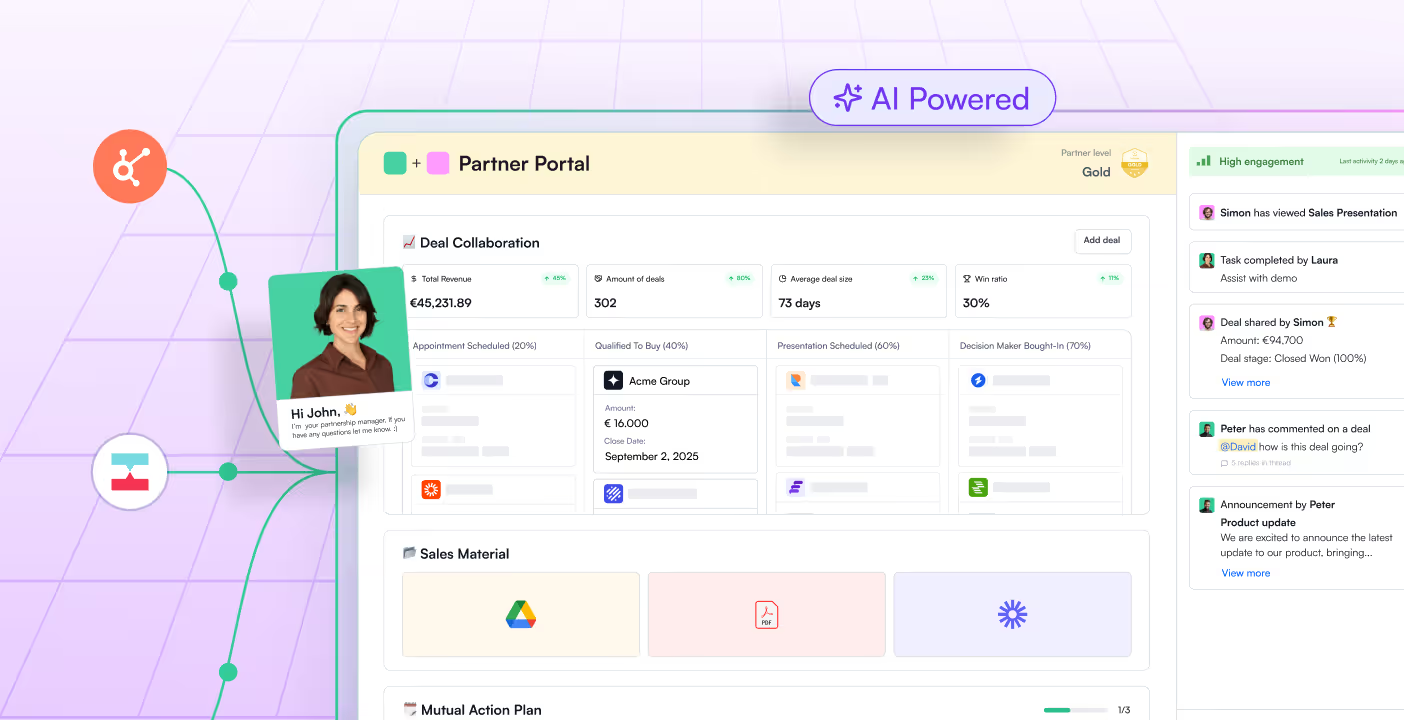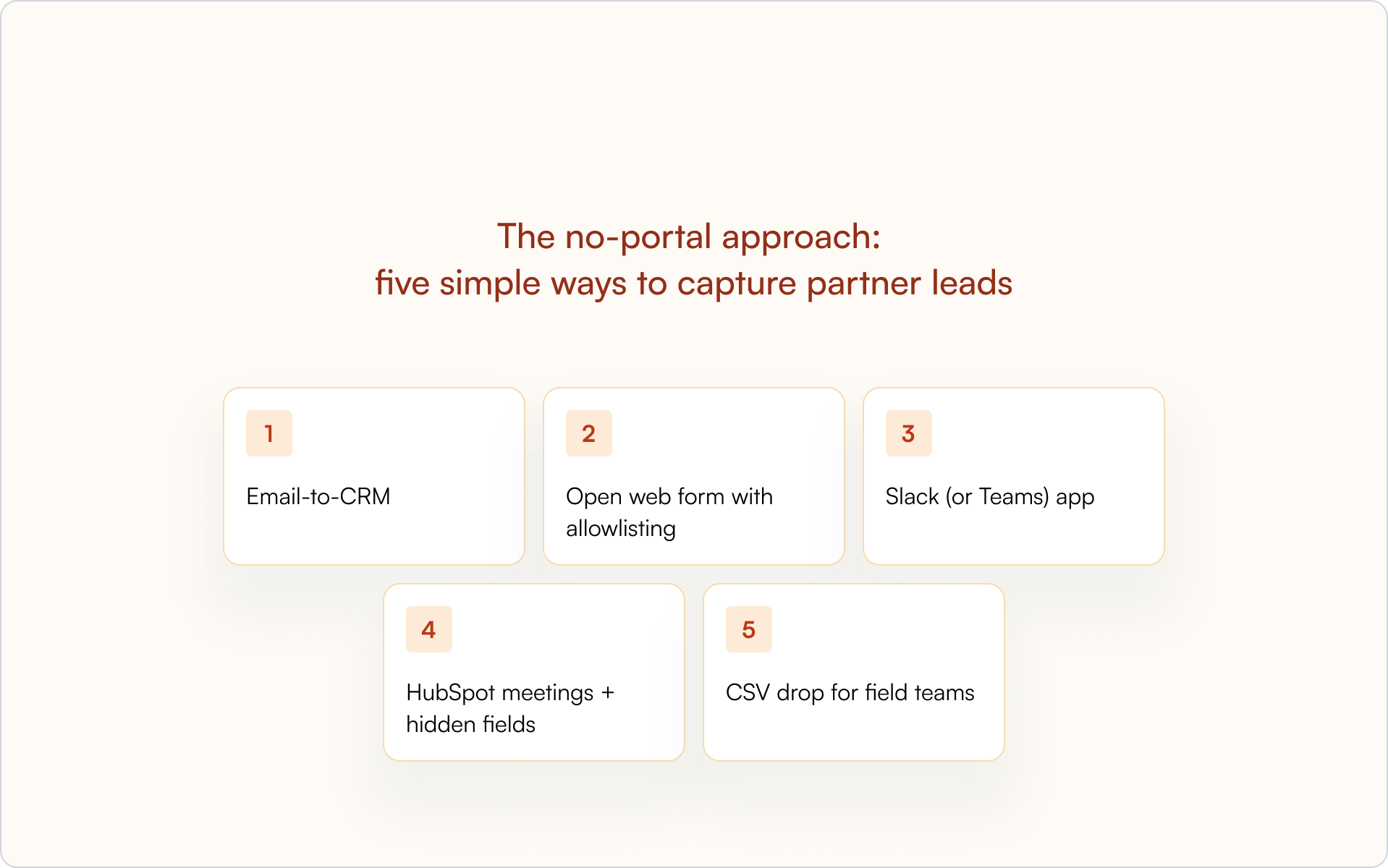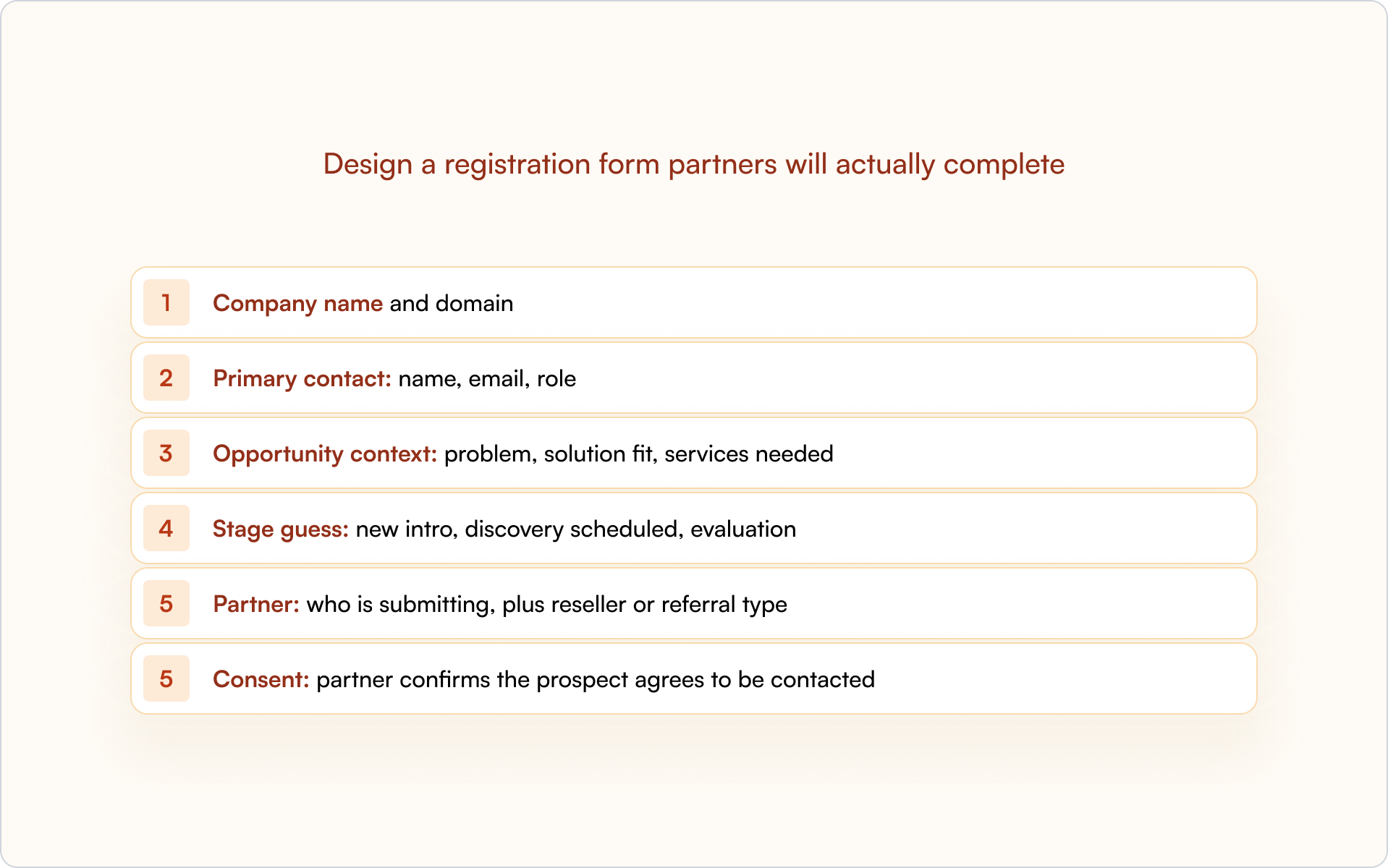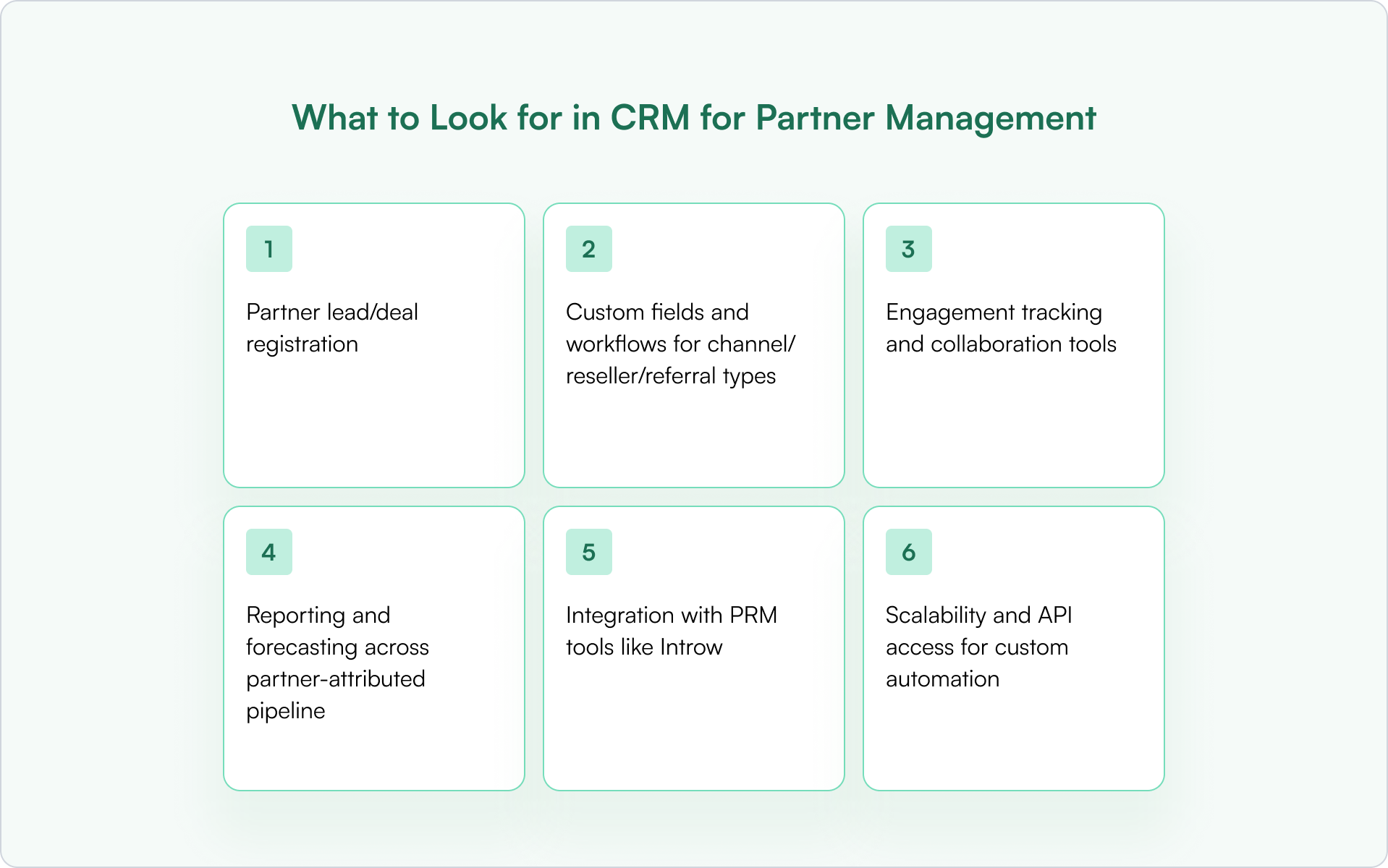B2B SaaS, partnerships aren’t just a strategy — they’re a growth engine. Whether you’re launching a new go-to-market initiative, expanding into new customer segments, or co-developing innovative solutions, forming strategic SaaS partnerships with the right partner is essential.
But let’s be clear: successful partnerships don’t just happen. They require structure, consistency, and purpose-built tools. That’s where Partner Relationship Management (PRM) software like Introw becomes a game-changer.
In this guide, we’ll walk through:
- Why B2B SaaS partnerships are critical for modern SaaS companies
- The most common partner types — and how to work with them
- How to build and scale a partner program with the right infrastructure
Let’s dive in.
Why B2B SaaS Partnerships Matter
SaaS companies need more than just a strong product — they need a powerful partner ecosystem. Strategic partnerships enable two or more companies to align around a shared go-to-market strategy, extending reach and reducing customer acquisition costs.
Well-executed SaaS partner programs can:
- Help tap into new markets
- Create new revenue streams through revenue sharing
- Accelerate product development partnerships
- Improve customer satisfaction and customer retention
Whether you're managing channel partnerships, integration partnerships, or joint marketing efforts, strategic SaaS partnerships are a cornerstone of long-term, scalable growth.
What Are the Types of B2B Partnerships?
Before building or optimizing your partner program, it's critical to understand the types of B2B SaaS partnerships available. While affiliate marketing gets plenty of attention, the most valuable SaaS partnerships often involve deeper integration, stronger alignment, and shared success metrics.
Let’s explore the landscape:
These partner types represent the most common paths SaaS companies take when scaling through partnerships. While each type comes with its own strengths and challenges, they all share one thing in common: they work best when supported by clear processes, aligned goals, and modern tooling.
Now that you’ve seen what types of B2B SaaS partnerships exist, how do you know which ones to pursue?
Choosing the Right Partner Program
Every SaaS business is unique — and so is its path to growth. That’s why choosing the right partner program isn’t about copying what others are doing — it’s about aligning your strategy with your goals, resources, and customers.
The ideal partner strategy will vary depending on your product maturity, market penetration, and internal capacity to support partners. For example:
- If your goal is demand generation, you may benefit most from referral partners, affiliate relationships, or integration partnerships that can drive top-of-funnel awareness.
- If you’re focused on market expansion, resellers, MSPs, or distributors with strong local presence can help you enter new geographies or verticals.
- If you need deeper product alignment, ISVs or system integrators may be the right fit for long-term co-selling and co-building.
To guide your decision, start by answering these questions:
- What new customer segments do we want to reach?
- Which potential partners already serve or influence those segments?
- What kind of co-marketing, sales support, or onboarding experience can we realistically provide?
- Are there opportunities for joint marketing efforts, or even a product development partnership?
You’re looking for alignment on not just reach, but capability and collaboration potential.
This is where a Partner Relationship Management (PRM) platform like Introw becomes essential. It surfaces real-time insights into:
- Which partners are submitting deals
- How fast those deals move through the sales pipeline
- Who’s engaging (and who’s not)
With those insights, your partner strategy becomes proactive, not reactive — based on data, not guesswork.
Let’s now dig into how to evaluate your current ecosystem and decide where to focus next.
How to Decide on Expanding Your B2B Partnerships
Expanding your partner program isn’t about volume — it’s about strategic alignment. Start by analyzing your current ecosystem: who’s performing, who’s not, and where the untapped opportunities lie.
- Referral partnerships can drive top-funnel growth with minimal overhead.
- Joint venture SaaS partnerships with ISVs or tech partners can open up new product capabilities.
- Channel partnerships and distributors can accelerate go-to-market in new geos or verticals.
With the PRM market projected to grow from $1.3B in 2023 to $4.6B by 2033, now’s the time to invest in systems that scale. Manual tracking simply won’t cut it — especially when the right partner could be your next major revenue stream.
Essential Functions of Partner Relationship Management Software
To succeed at scale, you need structure. PRM software is built to manage the entire partner lifecycle — from onboarding to revenue attribution.
Why SaaS Companies Need PRM
Choosing the right PRM helps:
- Scale channel partners with consistent experiences
- Eliminate chaos from your sales process
- Automate lead registration and partner onboarding
- Enable seamless co-selling and co-marketing
- Optimize for revenue attribution and partner performance
PRM = Structure + Speed + Scale
Spreadsheets and email threads might work for 5 partners — not 50. Introw gives you the automation, real-time insights, and CRM-native experience needed to grow your program without adding headcount.
So how do you ensure that growth doesn’t come at the cost of quality? It starts with a repeatable, scalable process for managing partner relationships at every stage of the journey.
6 Stages of a Partner Relationship Journey
A successful SaaS partner program follows a repeatable, structured journey. Here's how you scale from one partner to hundreds, without losing quality, engagement, or results:
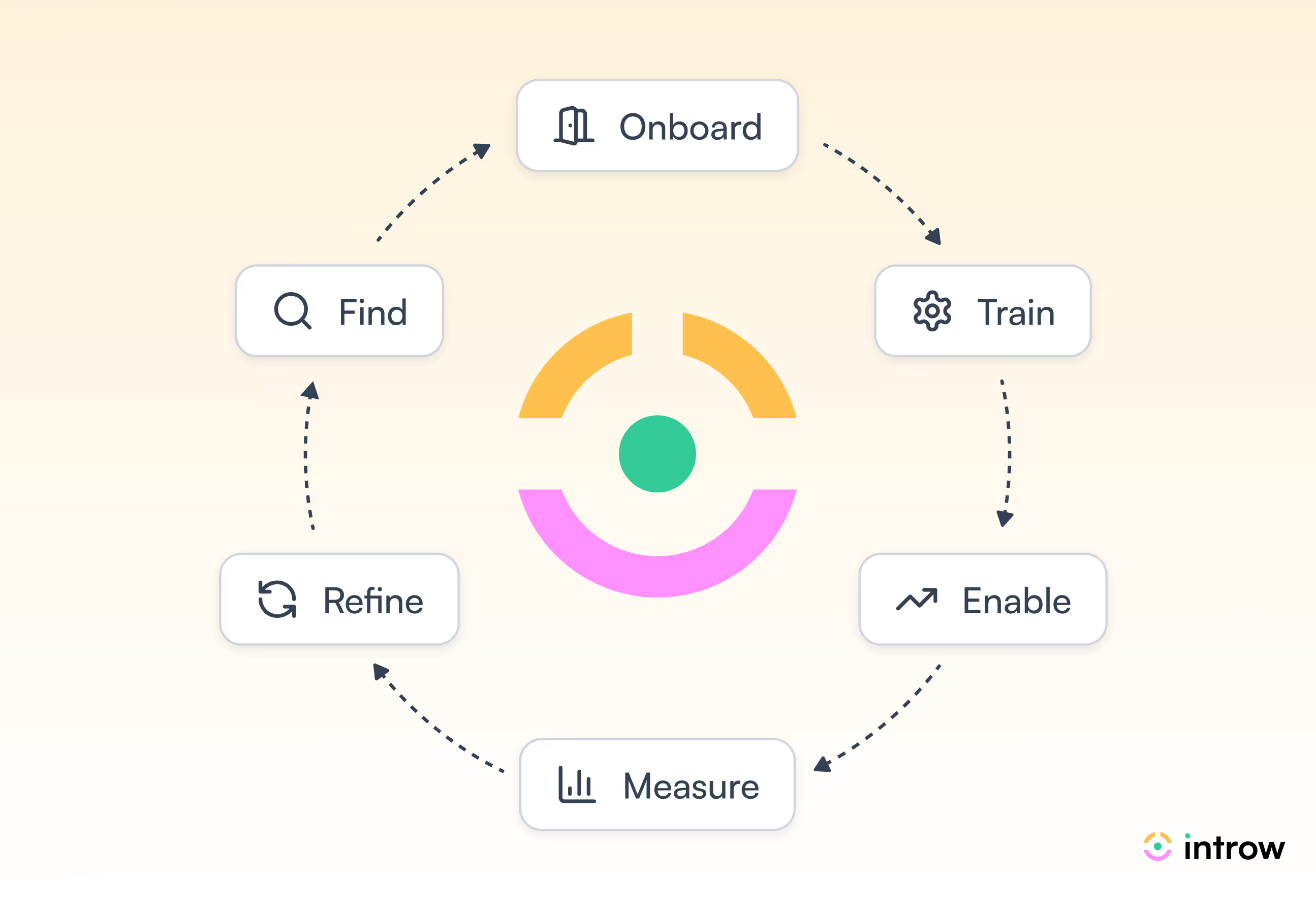
1. Find the Right Partners
Identifying the right partner is foundational. Evaluate potential partners based on their customer base, market alignment, technical compatibility, and cultural fit. Use tools like account mapping to uncover overlap between your customers and theirs — and prioritize partners with proven influence in your target segments.
2. Onboard with Ease
Once a partner is selected, the onboarding process should feel smooth, professional, and repeatable. Share training modules, certifications, documentation, and sales playbooks. With Introw, onboarding is automated with workflows, due dates, and reminders — so partners hit the ground running without bottlenecks.
3. Enable for Growth
Partner enablement is more than a checklist — it’s an ongoing relationship. Provide co-branded marketing materials, demo scripts, objection handling guides, and access to shared assets. Support them with regular updates and resource drops that align with product launches and campaigns.
4. Co-Sell with Precision
In the execution stage, seamless collaboration is key. Enable real-time deal registration, pipeline visibility, and clear ownership. Introw connects partners directly to your CRM workflows — allowing for faster response times, cleaner data, and collaborative pipeline management without the need for additional tools.
5. Measure and Motivate
Track KPIs like sourced revenue, win rates, sales cycle length, and content engagement. Use this data to recognize high performers and identify who needs extra support. Publicly celebrate success — and gamify performance through tiers, contests, and quarterly business reviews.
6. Refine and Scale
As your partner program matures, revisit your strategy. Which partners deliver the most value? Where are the drop-offs in the journey? What tools are underutilized? Use this insight to refine onboarding, update your enablement materials, and launch advanced tiers, integrations, or co-marketing campaigns.
Most importantly, keep feedback loops open — your best partners will show you what success looks like if you ask, listen, and iterate.
What should you look out for when building B2B Partnerships?
As your partner program grows, it becomes more complex — and more impactful. To keep things running smoothly, your PRM must do more than check boxes. It should actively empower your team to scale without sacrificing clarity or control.
Here are the most important capabilities to look for when scaling a SaaS partner program:
Partner Tiering & Certification
- Segment partners by performance, partner type (e.g., reseller, referral, MSP), or vertical.
- Automate training and certification workflows.
- Incentivize growth with exclusive rewards and visibility for top-tier partners.
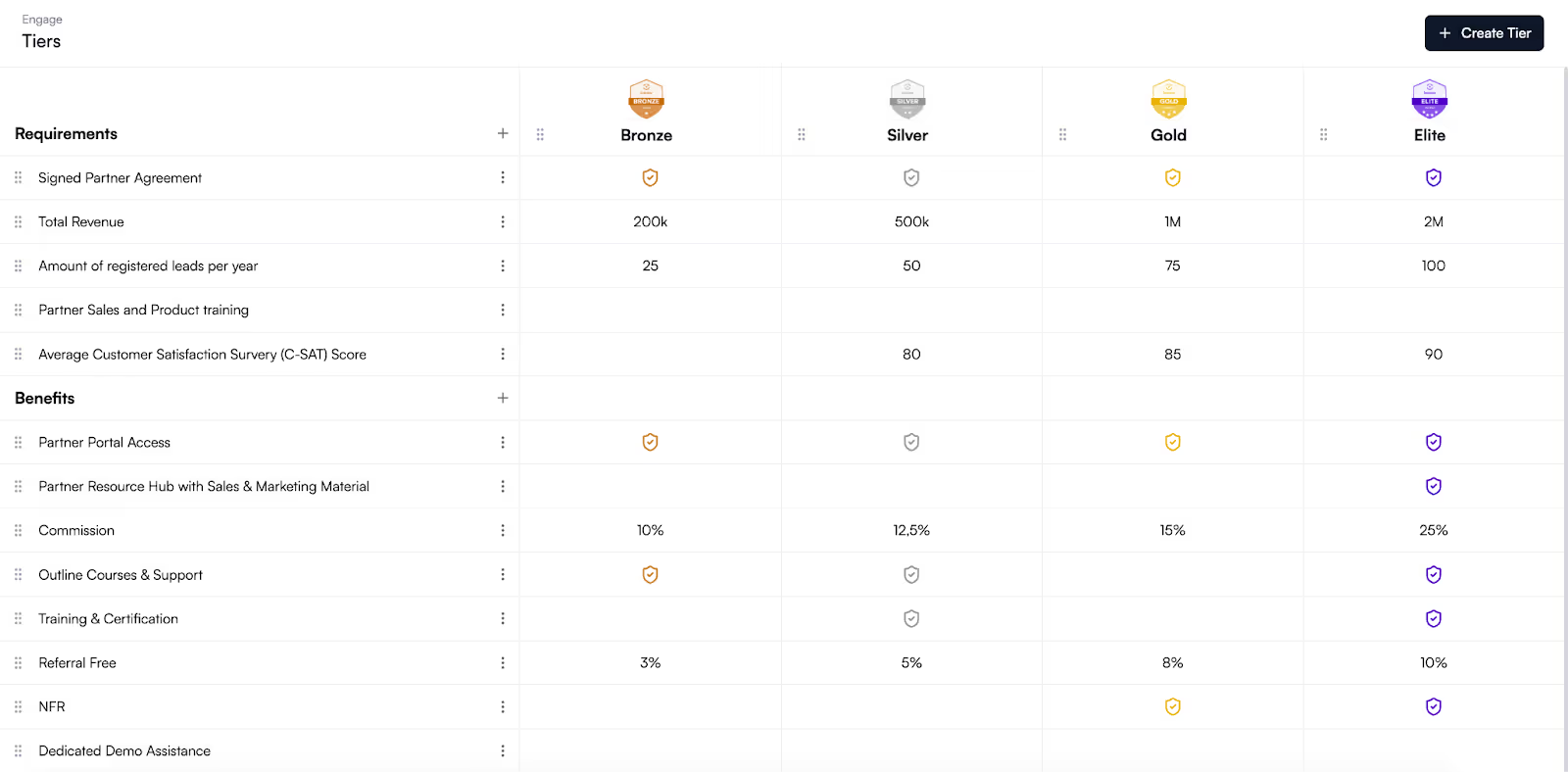
2. Commission Automation
- Tailor commission rules by partner type or deal stage.
- Auto-calculate and distribute rewards to reduce admin overhead.
- Ensure transparency and accuracy to build partner trust.
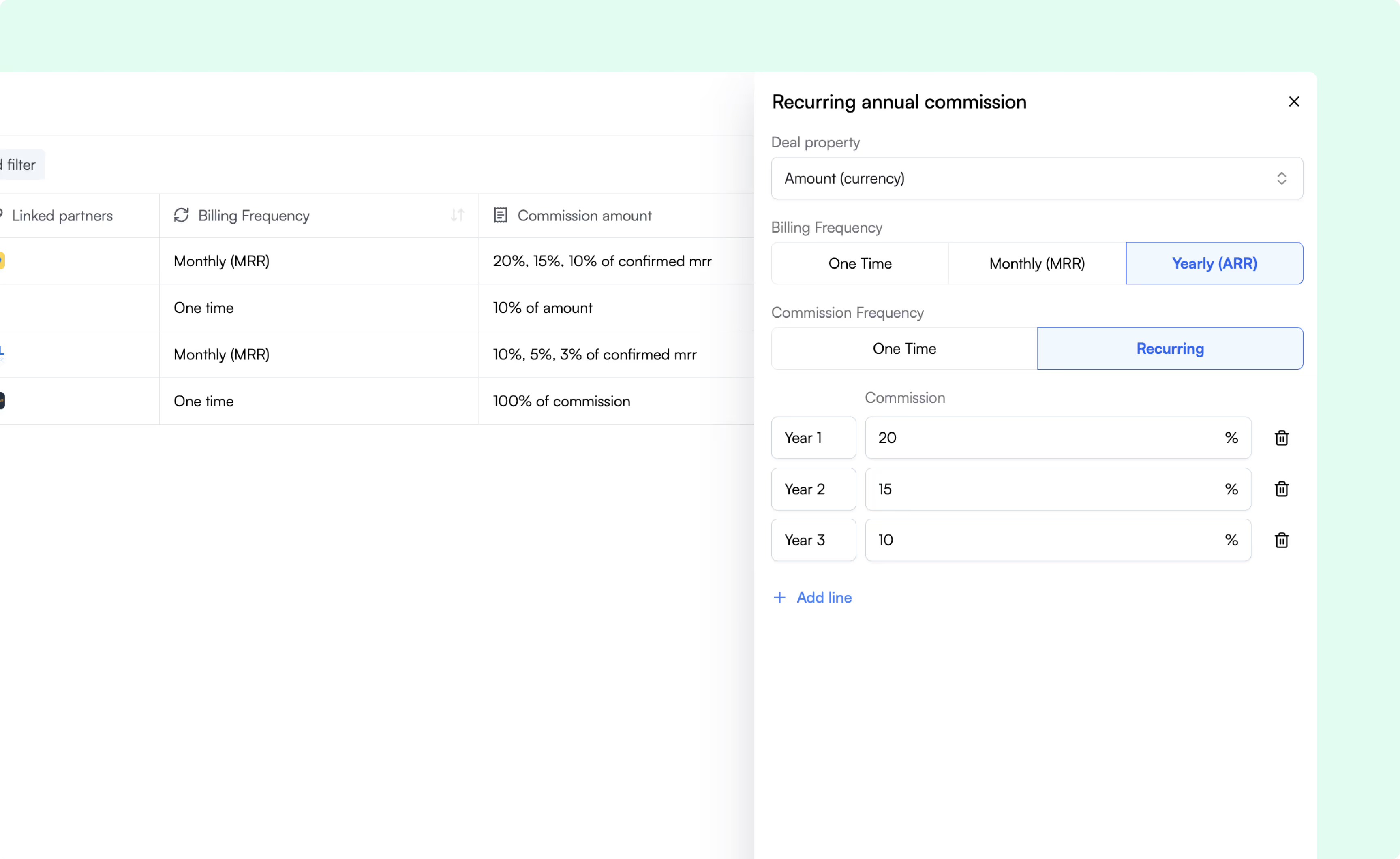
3. Partner Portal
- Offer a white-labeled, easy-to-navigate portal with sales enablement, product content, and real-time updates.
- Give partners a self-service hub for everything from training to reporting.
4. Lead & Deal Registration
- Prevent channel conflict with transparent, time-stamped registration.
- Support off-portal registration to boost partner participation by up to 30%.
- Auto-map to the correct Salesforce or HubSpot fields.
5. Account Mapping & Co-Sell Planning
- Identify overlap with tech partners, resellers, or integration partners.
- Use Introw’s built-in mapping to discover shared customers and coordinate co-selling.
6. CRM-Embedded Insights
- All partner data stays native to Salesforce or HubSpot.
- Enable RevOps teams to monitor performance, improve data hygiene, and support accurate forecasting.
These features help RevOps, Partner Managers, and revenue leaders align around shared KPIs — without adding complexity or extra tools.
Why Introw Works for Modern SaaS Partner Teams
SaaS companies operating in competitive markets — especially in the US and UK — are turning to PRM tools that integrate directly into their CRM, reduce manual work, and support partner collaboration at scale.
Introw supports:
- Partner & Channel Managers who want better visibility and fewer bottlenecks
- RevOps teams who care about data cleanliness, automation, and attribution
- CROs who need forecasting clarity and aligned revenue motions
With support for Salesforce and HubSpot, and no-login-required experiences for partners, Introw is built for fast-growing SaaS teams with real partnership goals.
Conclusion: From Strategy to Execution
Strategic partnerships are no longer a “nice to have” — they are a growth mandate for any B2B SaaS company looking to meet market demands, accelerate revenue streams, and serve new customer segments. But executing on that strategy requires more than good intent — it demands systems that scale, clear partner relationships, and the ability to act on data.
Whether you’re managing channel partners, building integration partnerships with tech partners, or exploring product development SaaS partnerships, your ability to structure and scale the program determines success. That's where modern partner infrastructure plays a transformative role.
PRM software like Introw empowers SaaS teams to:
- Build high-performing, data-driven partner ecosystems
- Align sales teams, marketing efforts, and RevOps around a shared pipeline
- Reduce development costs by turning co-selling and co-marketing into repeatable motions
- Increase deal velocity and improve customer satisfaction by enabling the right partner experience
The result? Successful partnerships that feel effortless — for both you and your partners.
Ready to unlock the next phase of your SaaS partnership strategy? 👉 Book a demo with Introw and build the partner ecosystem that drives your next stage of growth.
What is a PRM and how is it different from a CRM?
A PRM (Partner Relationship Management) platform is built specifically to manage partner programs, while a CRM focuses on customer relationships. PRMs handle onboarding, enablement, deal reg, and partner performance — all connected to your CRM.
What are the best SaaS partner programs to start with?
Referral programs and ISV integrations are great early-stage plays. As your program matures, expand into resellers, MSPs, and strategic SaaS partnerships.
How does Introw help with co-marketing efforts?
Introw lets you share marketing collateral, track partner usage, and collaborate on joint marketing campaigns directly from the platform.
Can I use Introw if I don’t have a large partner team?
Yes — Introw is built to scale with you. Whether you manage 5 or 500 partners, you’ll have the workflows and automation you need to grow.
How do I measure the success of my partner program?
Track partner-attributed revenue, deal registrations, conversion rates, and partner engagement metrics. Introw gives you a real-time view of all of it inside your CRM.


.svg)




















